Last week Apple updated its Retina MacBook Pro lineup to put a little more horsepower under the hood. How does the latest version of Apple's best notebook compare to what might be the best Windows 2-in-1? Read on, as Gizmag compares the 2014 MacBook Pro with Retina Display to the Microsoft Surface Pro 3.
Before we get started, keep in mind that we're only looking at the 13-in version of the Retina MacBook Pro. Apple also makes a 15-in model, but it's less of a direct rival to the 12-in Surface.
Size
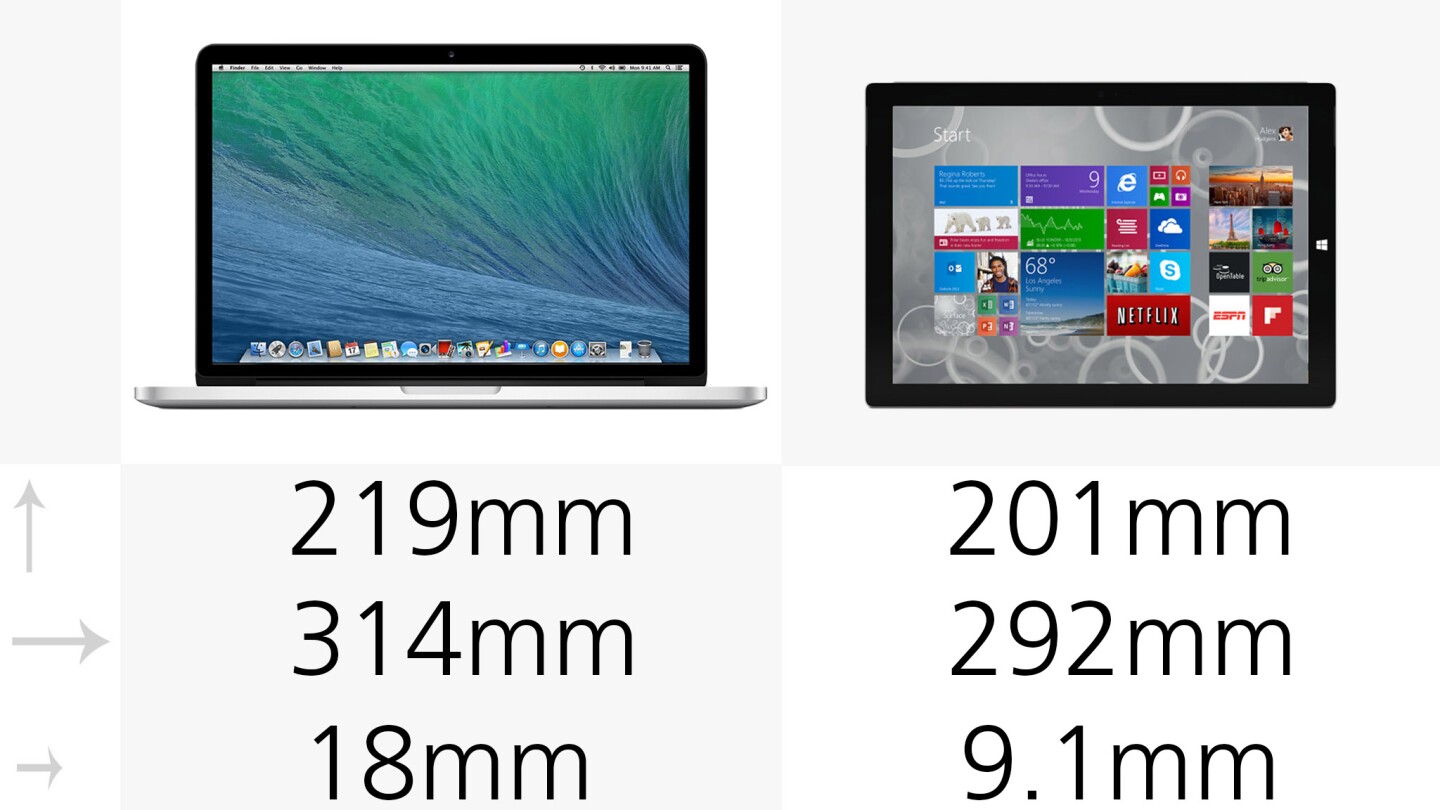
The new Retina MacBook Pro has an identical body to its late 2013 predecessor. The Surface Pro 3, meanwhile, is 8 percent shorter and 7 percent narrower than the MacBook. The Surface sits in a pretty nice size range for a laptop, but it also makes for a huge tablet.
The Surface Pro 3 is very thin for a full-fledged PC. Even with its keyboard attached, it's still 23 percent thinner than the Retina MacBook.
Weight
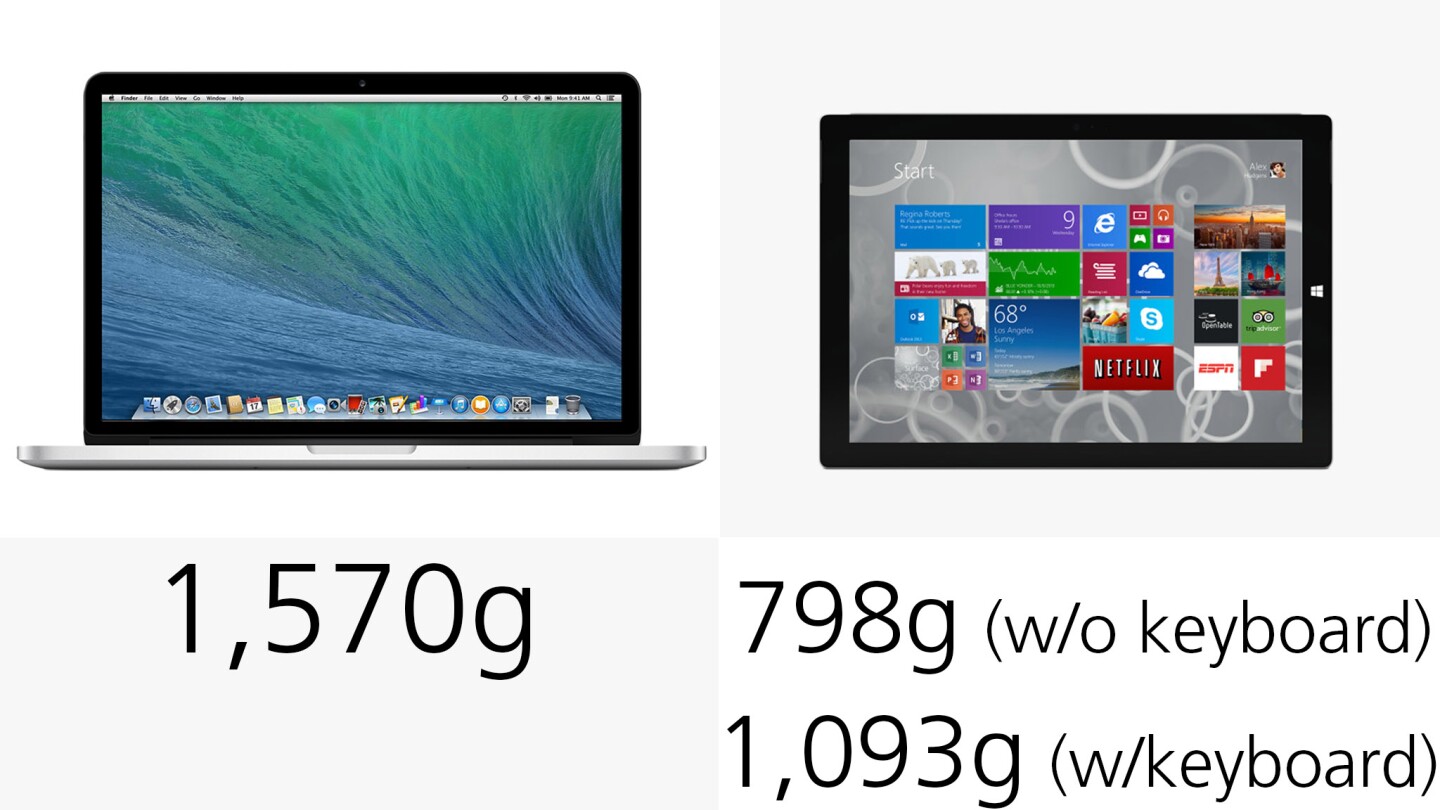
The Surface Pro 3 is also very light for its size. Even when you include its keyboard, it still hits the scales at 30 percent lighter than the Retina MacBook.
Build
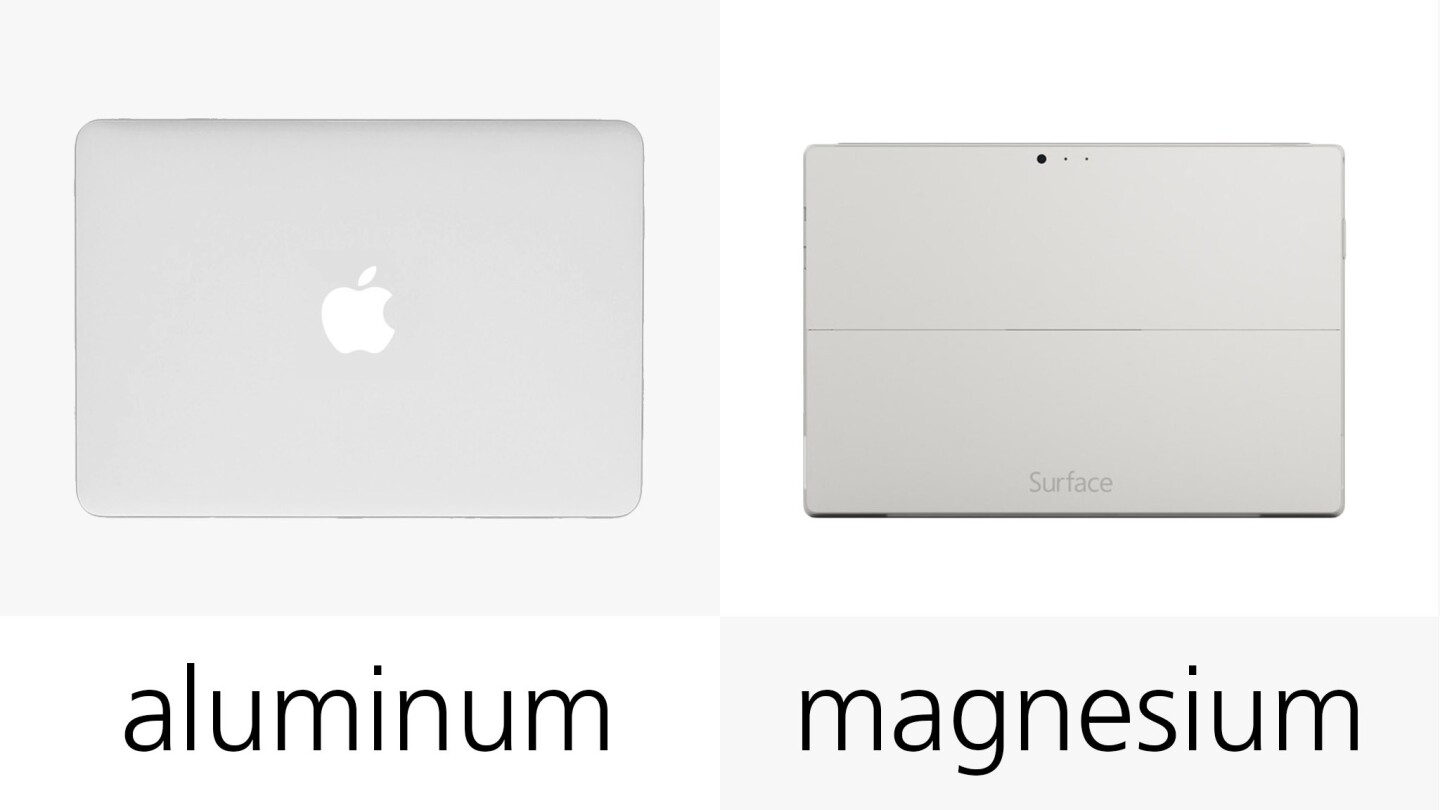
No changes for either Apple or Microsoft, as both new models stick with the aluminum or magnesium builds that we saw in their (respective) predecessors.
Keyboard type
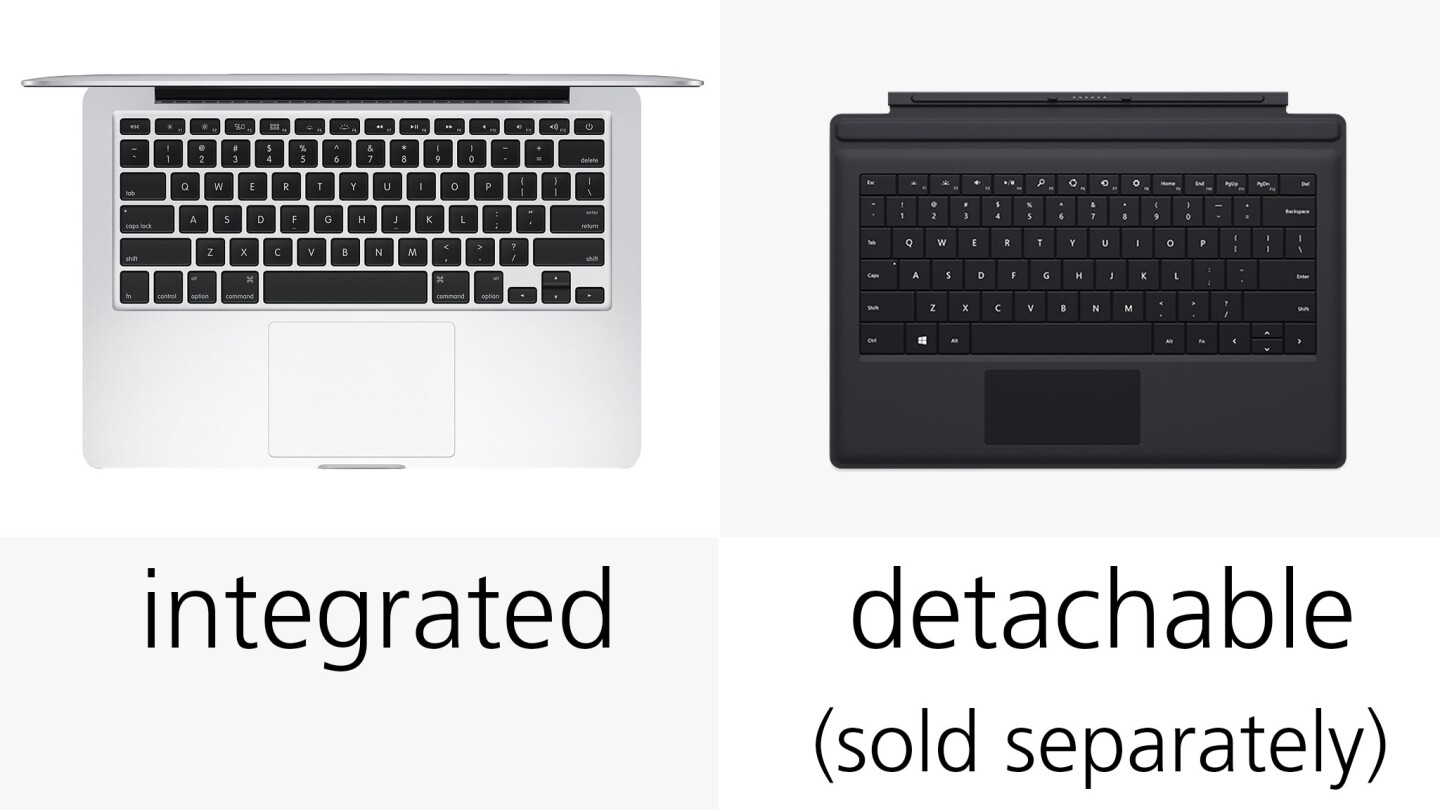
Of course we're comparing a dedicated laptop (MacBook) to a convertible tablet/laptop hybrid (Surface). The Surface's plastic keyboard cover is detachable and sold separately.
Backlit keys

Starting with the Type Cover 2 (released alongside the Surface Pro 2 in late 2013), Microsoft added backlit keys to its Surface lineup. The Pro 3's cover continues this tradition, as does the MacBook.
Trackpad
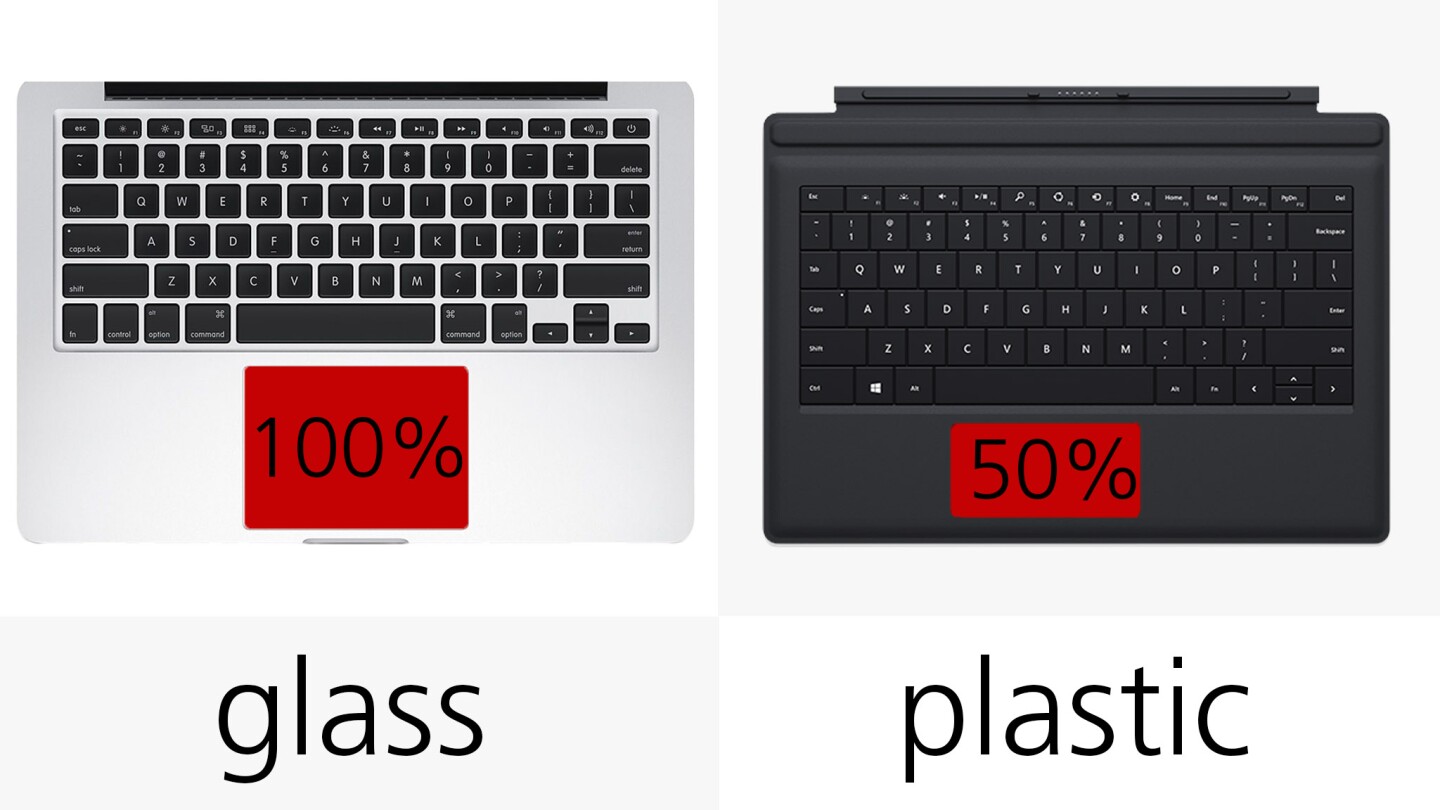
No contest here, as the MacBook's huge glass trackpad is tough to beat. The Surface Pro 3's touchpad is not only made of plastic, but it's only half the size of the MacBook's.
Tipping the scales even farther in the MacBook's direction is OS X's wealth of multitouch trackpad gestures. Trackpad navigation is much less of an emphasis in Windows, as it doesn't usually go beyond simple mouse functions like pointing, clicking and scrolling.
Touch screen

That trackpad isn't necessarily a huge loss on the Surface, though, since you have a touch screen to help you to make your way through Windows.
Stylus
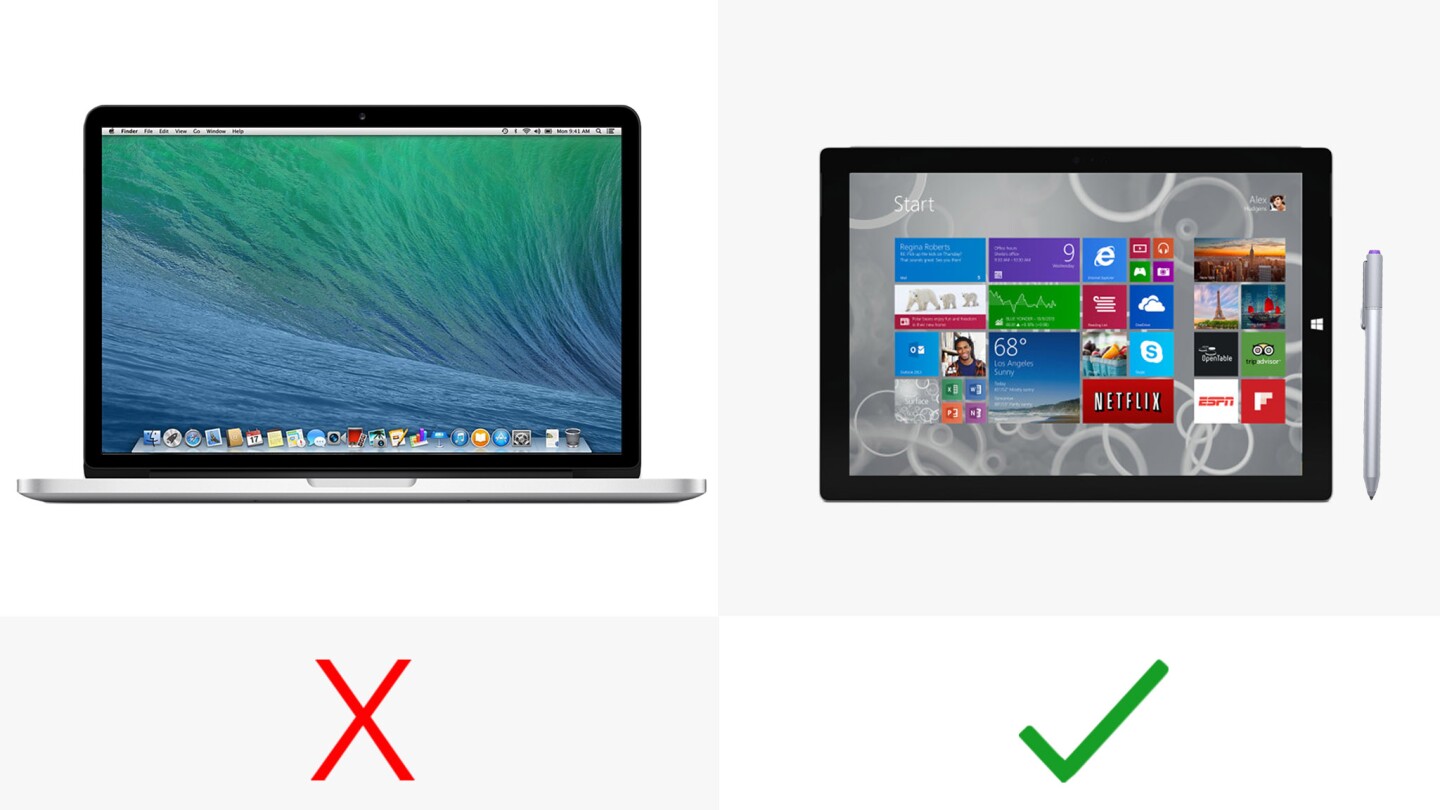
Microsoft's Surface Pen is another big cornerstone of the Surface experience. The latest version has OneNote integration baked in, letting you launch Microsoft's note-taking app from anywhere, just by clicking the top of the pen.
Display (size)
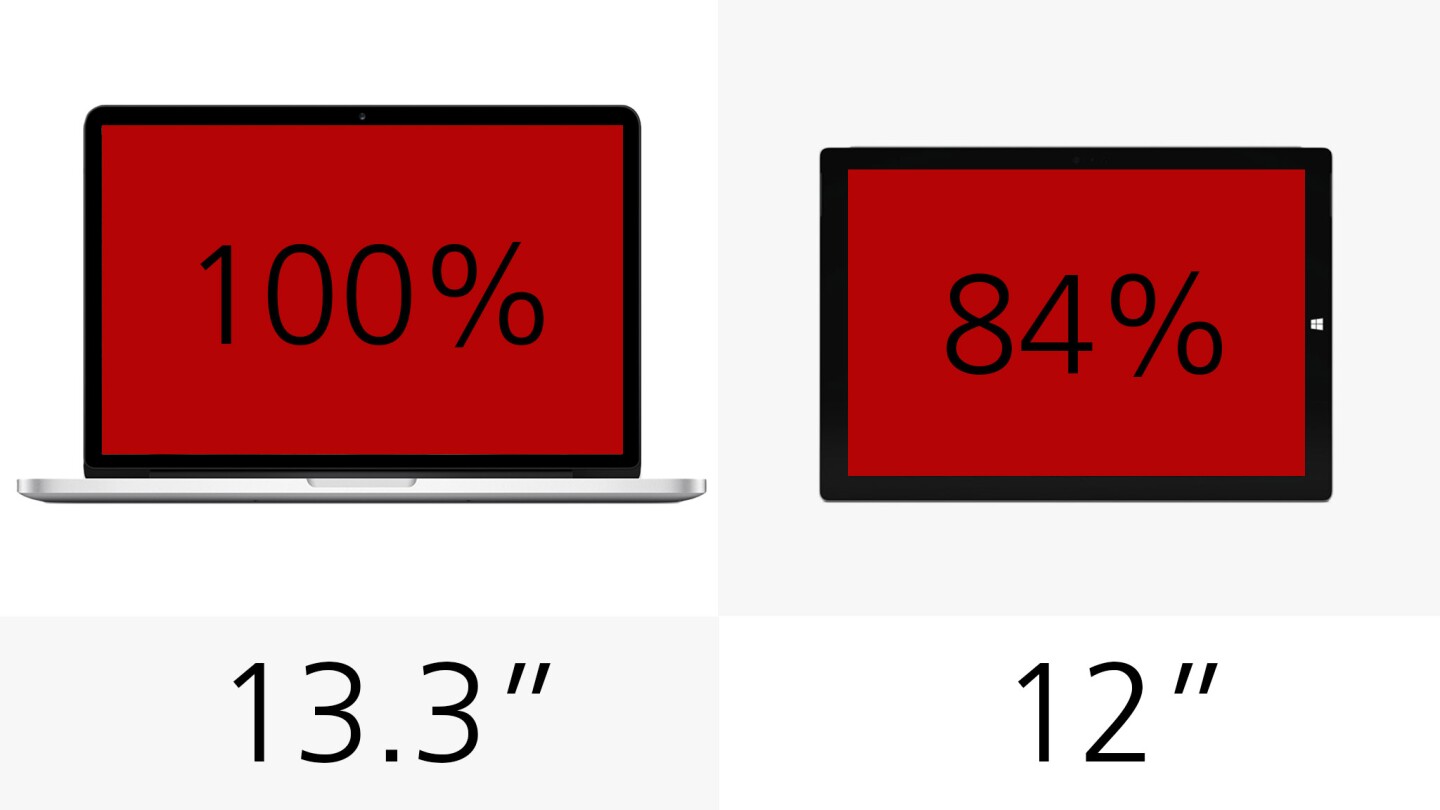
The MacBook has a 20 percent bigger screen. Had Microsoft made the Surface's screen any bigger, though, it would have been ridiculously oversized as a tablet. It's already toeing that line.
Display (resolution)

The MacBook has the sharper display, and I'd say it's also the better overall screen. Though their pixel densities are fairly close, remember that you'll often be holding the Surface as a tablet, when it will sit closer to your eyes. The Surface's display looks terrific in laptop mode, but isn't quite as crisp as a tablet.
Processor

The MacBook is the faster machine, but this visual only shows the entry-level processors for each device. Higher price points give you faster CPUs in both devices, jumping all the way up to Intel Core i7 options for both PCs.
Graphics

Both systems have integrated Intel graphics, but the MacBook has the edge.
RAM
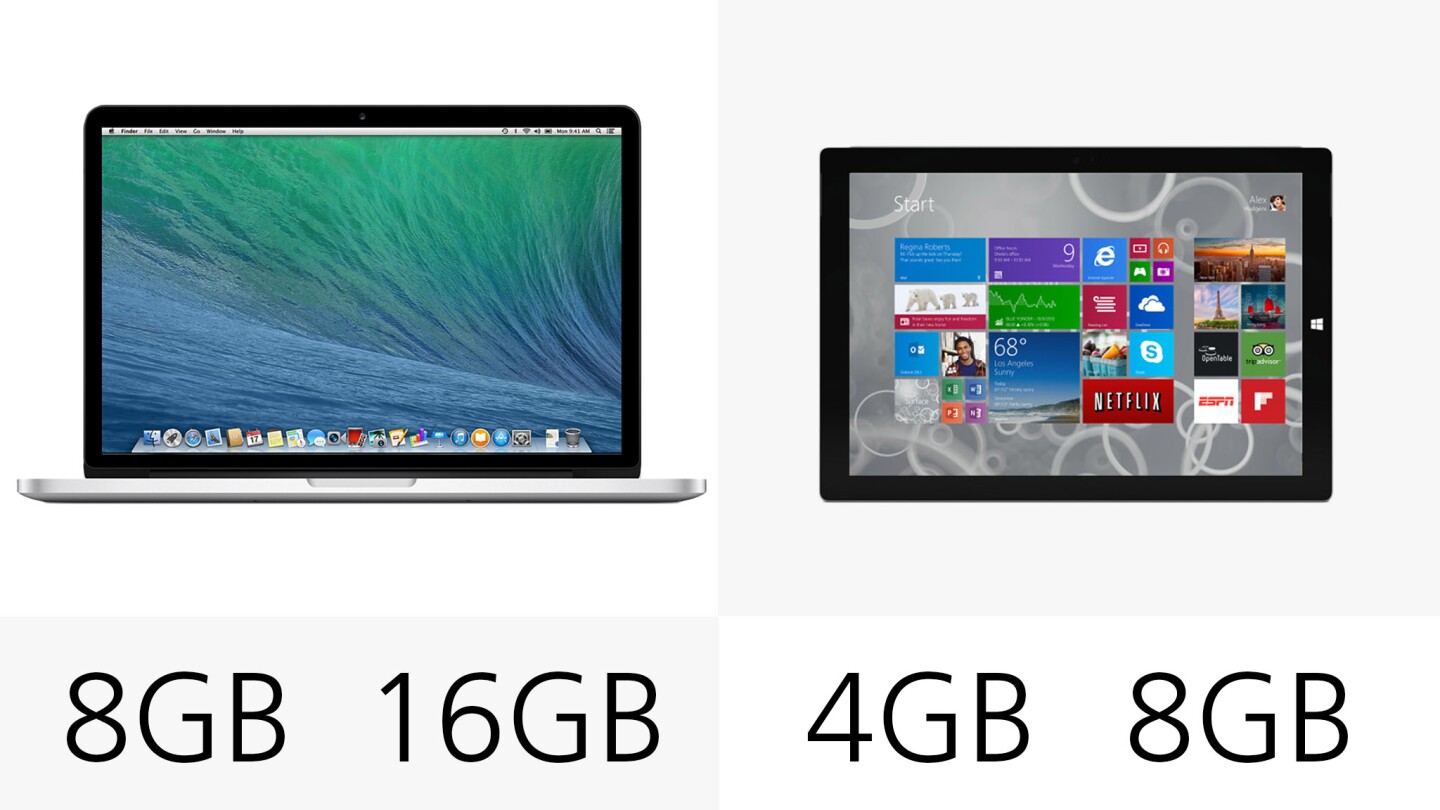
This was one of the big updates in this latest batch of Retina MacBooks, as it now starts with a minimum of 8 GB of RAM.
Storage

The MacBook offers larger storage tiers, though when you look at prices relative to storage, the Surface has the edge. For example, the 128 GB Surface Pro 3 (including keyboard cover) costs US$1,130, compared to $1,300 for the base 128 GB MacBook. The MacBook has other advantages, though, so we wouldn't get too carried away in declaring the Surface the better overall value.
USB 3.0

The MacBook has two USB 3.0 ports, while the Surface only has one.
Thunderbolt

You also get two Thunderbolt ports in Apple's notebook. Similar to FireWire before it, most Windows PC OEMs never saw Thunderbolt as an essential standard.
SD card

The MacBook sports a full-sized built-in SD reader, while the Surface has a smaller microSD slot. The microSD is more discreet and can serve as extra semi-permanent storage for your Surface. If you want to use the MacBook's SD slot in that way, you'll need to pick up something like the Transcend JetDrive Lite.
Video out
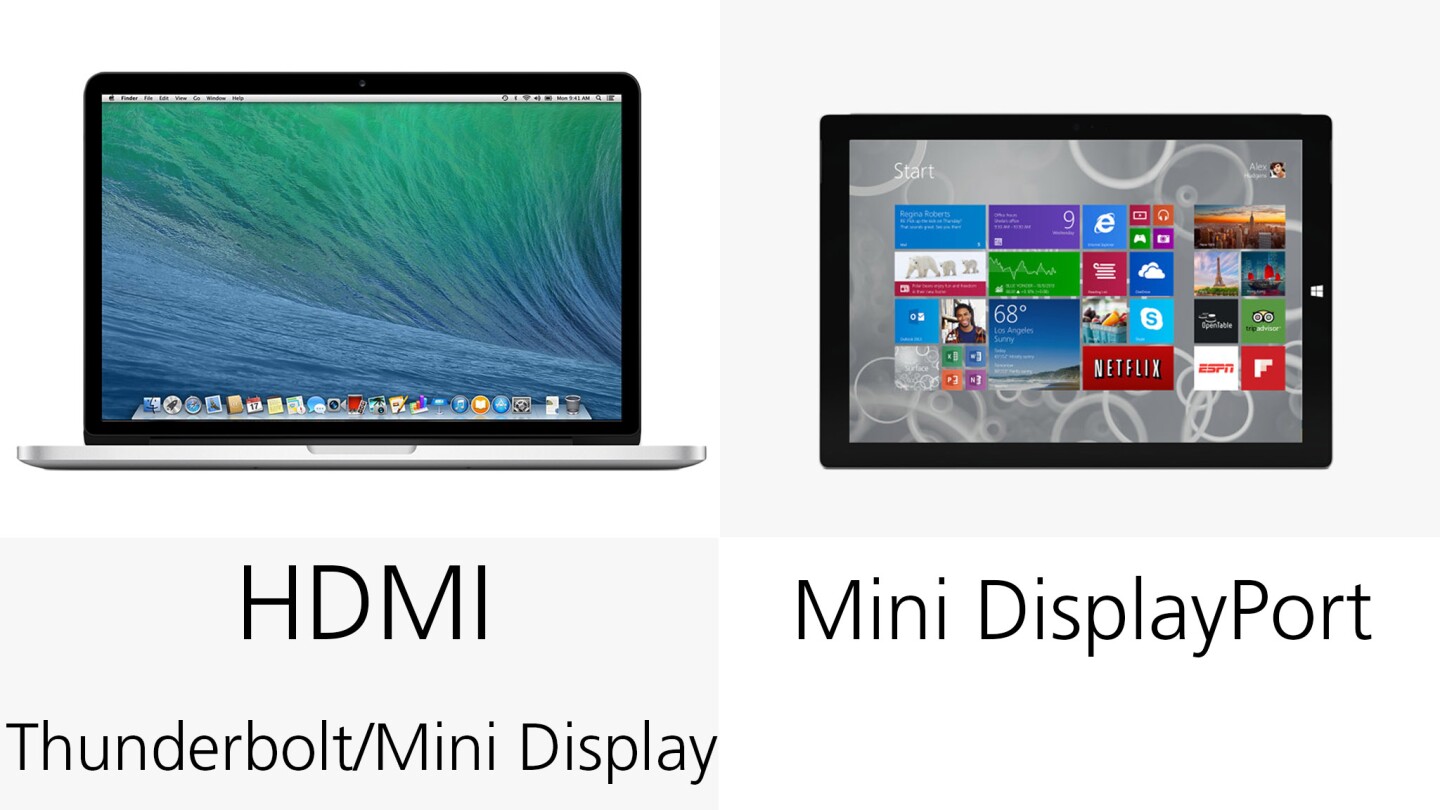
If you want to connect your MacBook to a TV or external monitor, all you have to do is pop an HDMI cable in its corresponding port. On the Surface, you'll need to buy a special cable (or adapter) to take advantage of its smaller Mini DisplayPort. There are also USB-based video out options for both devices.
Battery
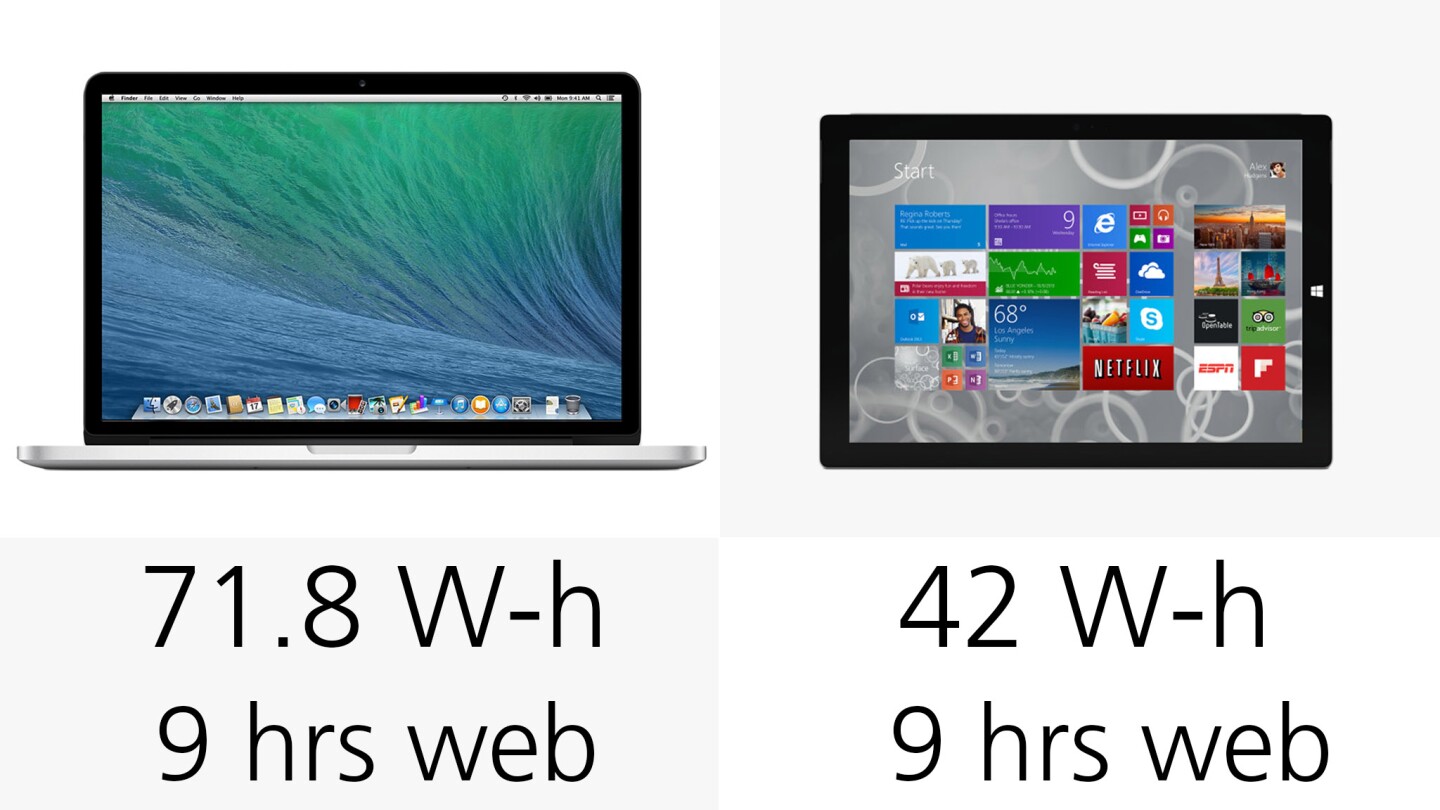
Manufacturers' estimates for web use are identical. Both PCs' Haswell processors help them to last much longer than any pre-2013 laptop ever could.
Cameras

Since it doubles as a tablet, the Surface has front and rear cameras. As a dedicated laptop, the MacBook only has a standard front-facing webcam.
Wi-Fi
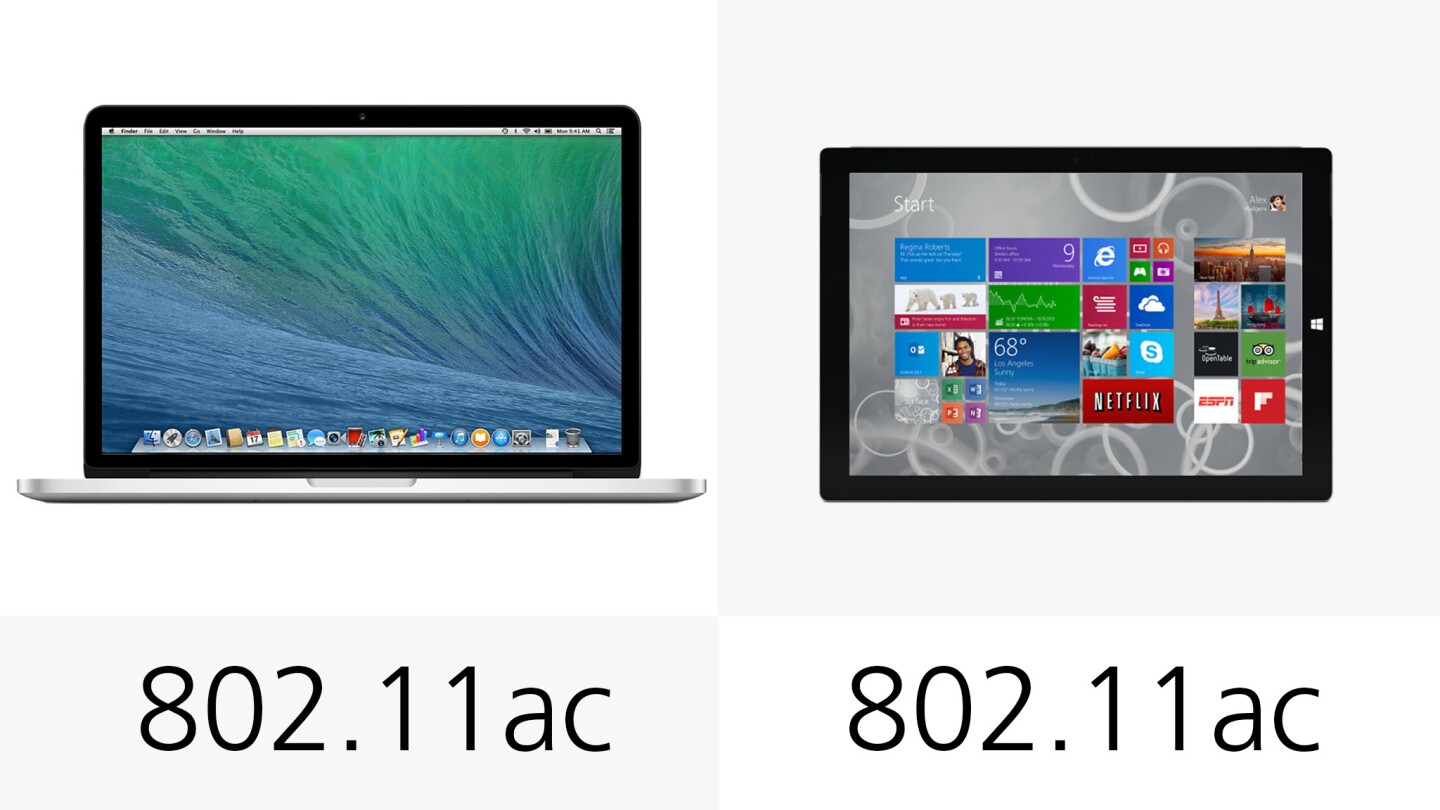
Both PCs support the latest (and fastest) Wi-Fi standard, 802.11ac. Just remember that you'll also need a compatible router to enjoy those faster speeds. And of course both machines still play nicely with older Wi-Fi standards as well.
Software

The MacBook runs OS X Mavericks (soon to be updated to OS X 10.10 Yosemite), while the Surface runs Windows 8.1 Pro.
Each platform has its loyal fans, but the MacBook has at least one huge advantage: you can run both OS X and Windows on it. Just install Windows in a virtual machine in OS X (something like Parallels or VMware Fusion will do the trick) or directly onto its own partition (via Apple's Boot Camp). Though it would be technically possible to run an OS X VM on the Surface, there's no legit or officially-supported way to do so, since Apple only licenses its software for Macs.
Release

Apple just refreshed the Retina MacBook lineup last week, while the Surface Pro 3 first launched in June. Out of the gates, you could only buy a mid-range SP3 ($1,000+), but now Microsoft is shipping all variants of the Pro 3.
Starting price

If you're content with the entry-level Surface (64 GB storage, 4 GB RAM, Intel Core i3 processor) then you can save $370 over the entry-level Retina MacBook's starting price. The Surface that's most comparable to the entry-level Retina MacBook costs $1,130, including keyboard. That's a healthy savings, but you'll also want to remember that this mid-level Surface also has a slower processor and less RAM than its MacBook equivalent.
For more on these two, you can hit up our full reviews of the late 2013 13-in MacBook Pro with Retina and the Surface Pro 3. And if you're intrigued by the Surface's hybrid tablet/laptop form factor, you can always cast your net wider and check out our Windows 2-in-1 Comparison Guide.




























